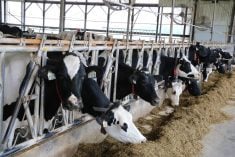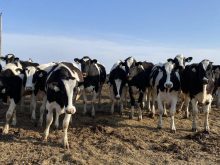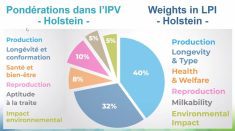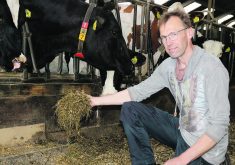Mary Ann Doré had the best of intentions when she designed and built a new dairy barn in 2011.
Doré, who farms with husband Joe and her brother, Graham Johnston, near New Dundee, Ont., wanted the barn to be sustainable, and she hoped to set high standards for cow comfort.
They installed solar panels to generate electricity and the stalls were made from flexible plastic instead of metal to reduce the likelihood of injuries.
Doré and her family also implemented a system that used bedding for the dairy cows made from composted manure.
Read Also

Beef check-off collection system aligns across the country
A single and aligned check-off collection system based on where producers live makes the system equal said Chad Ross, Saskatchewan Cattle Association chair.
Many of their sustainability initiatives were successful, but they abandoned the compost piece because an unacceptably high number of cows developed mastitis, an infection of the udder.
“It was a great theory, (but) we just couldn’t make it work,” Doré said, noting the incidence of mastitis was particularly bad in February and March.
“We actually stopped using (compost bedding) this year. We found it was a struggle in the early spring.”
As noted on an Ontario government website, a number of dairy farmers in the province have been using manure solids to make animal bedding.
The first step of the process is putting the manure into a press to remove moisture. The drier material is then transferred to a rotating drum, which draws in air to feed the micro-organisms.
The compost in the drum eventually reaches a temperature of 65 to 70 C, which kills most of the pathogens. It takes about three days to convert the manure into usable bedding.
Doré and other early adopters in Ontario tried the system, but many have given up on the process.
“We found there are a lot of farmers in the area that have also stopped.”
Jack Rodenburg, co-owner of Dairy Logix, an Ontario consul-tancy specializing in dairy barn management and design, has heard the same story.
“The compost type systems … most of the people who have those have either struggled a lot or moved on.”
Rodenburg said he hasn’t conducted scientific studies of compost and livestock bedding, but he has worked in the past as a dairy production expert with Ontario Agriculture.
“There’s probably not a lot of bacteria load in the (compost) material itself, of the kind of bacteria that would cause mastitis,” he said.
“But it’s still a pretty good environment for those bugs to grow in…. The cow adds liquid when she urinates. Now a combination of liquid and air and something to grow on becomes a great environment for bacteria.”
Using compost as bedding is an attractive option for dairy producers because the cost of straw, wood shavings and other bedding material has been increasing, Rodenburg said.
“There are more alternative uses for things like straw, wood shavings … so it becomes very attractive to use something for bedding that you already have on the farm — manure solids.”
However, compost isn’t free because there are operating and management expenses.
“It adds a lot of costs, in terms of mechanical and electrical costs (for running the drums),” Rodenburg said.
Doré now uses a waterbed system for dairy cow bedding, in which the livestock rest on a dual chamber mattress filled with water.
Doré and the cows are pleased with the new system.


















